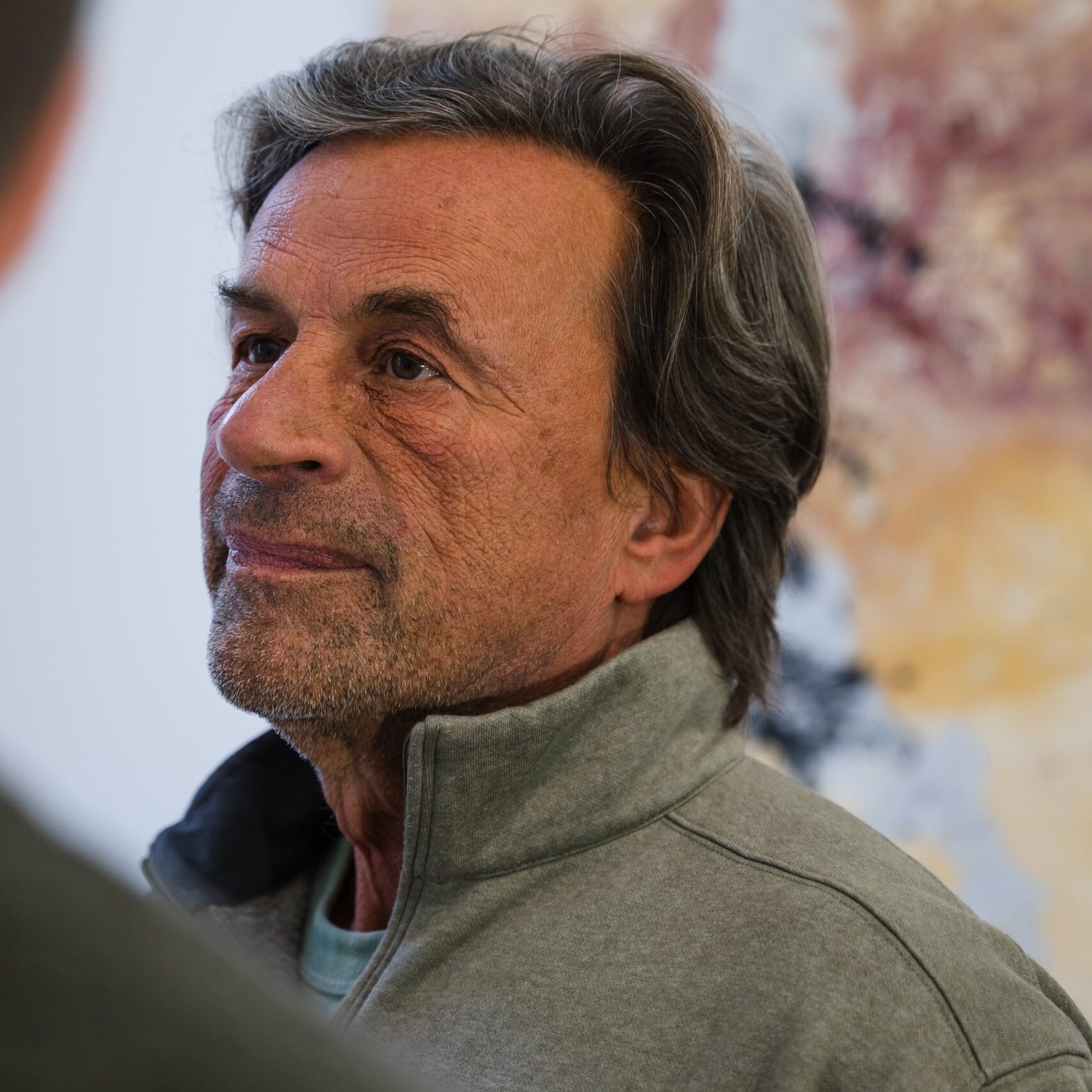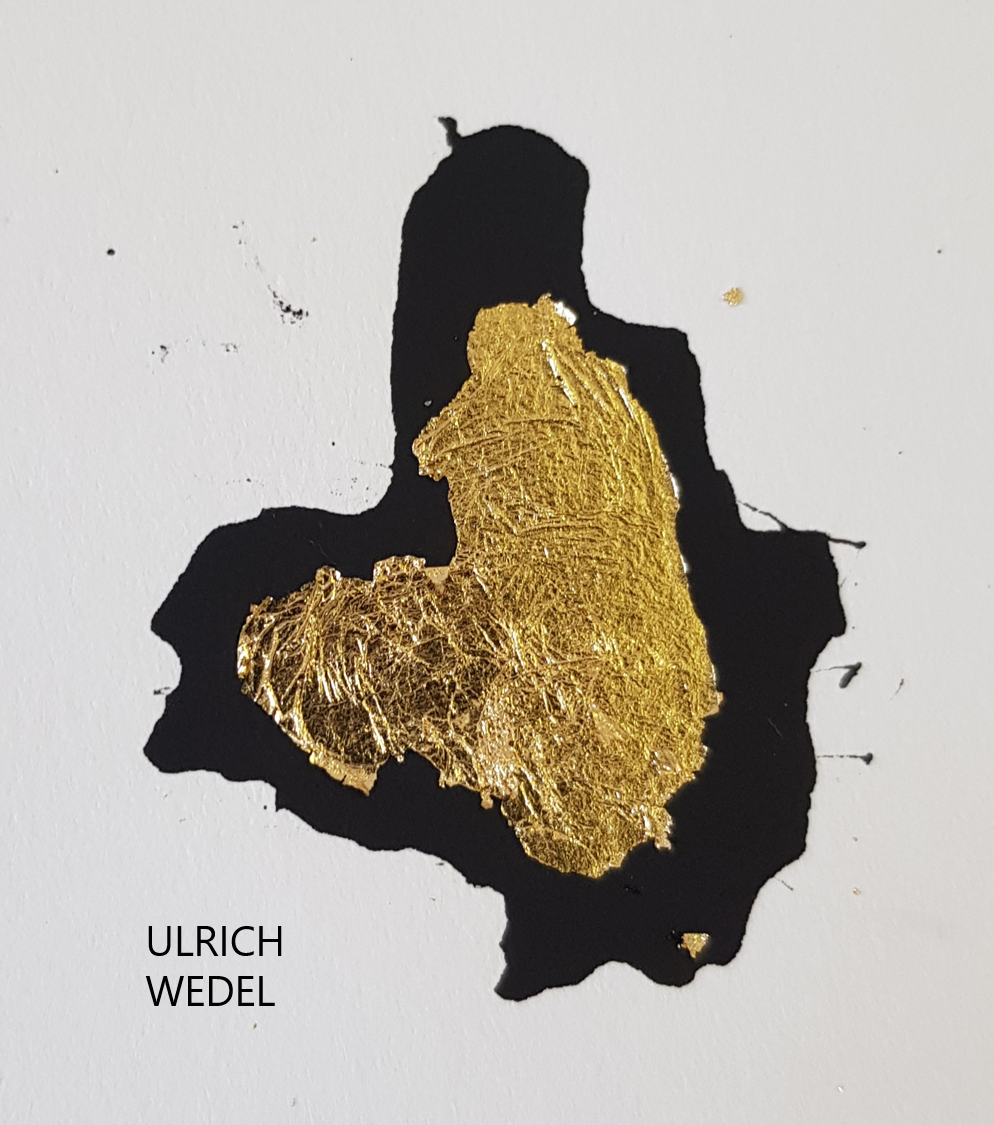Modern Abstract Sensitive
In my paintings, coincidence acts within the limits I have set and takes over a compositional work until, at a certain point, I decide to fix it. Coincidental moments are subject to changes I help to shape. Thus, the unforeseeable and unpredictable becomes a co-creator in the artistic process.
Coincidence creates the greatest possible authenticity, and I just need to incorporate it into my art. Thus, coincidence is a conscious choice in my paintings, a choice that opens the door to a unique experience.
To achieve this, I developed my very own technique by processing acrylic pigments in a particular way after applying them on paper or canvas.
Vita
Ulrich Wedel, born 1955, was always enthusiastic about art, but decided to study and practice architecture instead. Nonetheless, his passion for art remained constant over the years.
He experimented with a variety of techniques in his quest to finding his artistic voice, and this ultimately led him to developing his very own painting style. In 2012 he moved from a figurative to a more and more abstract form of expression. He has exhibited in solo and group exhibitions in Germany and abroad.

About Ulrich Wedel
Prof. Dr. Dieter Ronte, art historian/-curator
Against the Grain
Except for the busy decades in his career as an architectural engineer, Ulrich Wedel has painted enthusiastically and prolifically since his youth. He returned to painting later in life.
Very cheerful by nature, he pondered in his fifties life’s questions for himself. He read a great deal of philosophy, which played an increasingly greater role in his conversation with art. Painting became again his constant companion. Each of his creations is a sort of visual symbol of new truths, other spheres of experience, other journeys and existential questions. Painting became his colorful philosophy, one that departed from all narrative forms, and that erased predicative and indicative iconographic bonds. In themselves, his paintings are free.
At first glance, constructive elements provide the images with order, an order that dissolves itself through the color structures that spread across the entire canvas like an invisible web. The structural alignments suggest a composition while avoiding a Pollockesque “all over.” The paintings have an orientation, yet it is impossible to make a direct and irrefutable statement about them.
At each viewing, the paintings speak in a new way. In spite of letter-like forms, nowhere is there readability. The small shapes that seem to repeat themselves as in writing are never congruent, but rather always marked by individuality. In the arrangement of multiple symbols, there is a plethora of legibility that viewers must make their own. They become collaborators in the spirit of Umberto Eco’s opera aperta. The paintings invite us to take part in a lengthy dialogue that begins when we try to ascertain meaning, which, however, the painting denies us. We can read things into them and recognize shapes of figures that then rapidly dissolve.
The process of painting in various techniques allows the paintings to change non finito, to refreshing incompleteness due to the fact that the painter works with more paint than the viewer can see in the finished image. The thick application of paint is followed by a reduction of the color mass and the breaking up of surfaces to reveal a large, whirling wealth of colors similar to a kaleidoscope. The paintings do not stand proudly by themselves. They repeatedly self-create themselves, demonstrating that the process of becoming is never actually complete, that even a painting is always searching and inventing itself. This characteristic ensures every image on paper or on canvas freshness, dialogue, transparency as well as departure from the didactic wagging finger that so strongly dominates today’s international art scene. Wedel evades that, and his art rests more on the older, post-war abstract generation of artists with whom he grew up.
Since he sees painting as an enhancement of life’s experiences, he needs no theories, no prior designations neither to create a work of art nor to explain it. Like so many other painters who were trained in another profession, Wedel has not suffered from academic influence (similar, for example, to the Brücke painters in Dresden who studied architecture, but not painting). Each painting is its own cosmos, each painting is differentiated by a title, which, however, is not added until the painting is finished. It is just as effective for identification as it is as a point of access for the viewer. But it never says anything about the content, as Wedel is not illustrating any visual ideas. He creates them in the process of painting. The final form is often dictated by chance, just like life itself.
